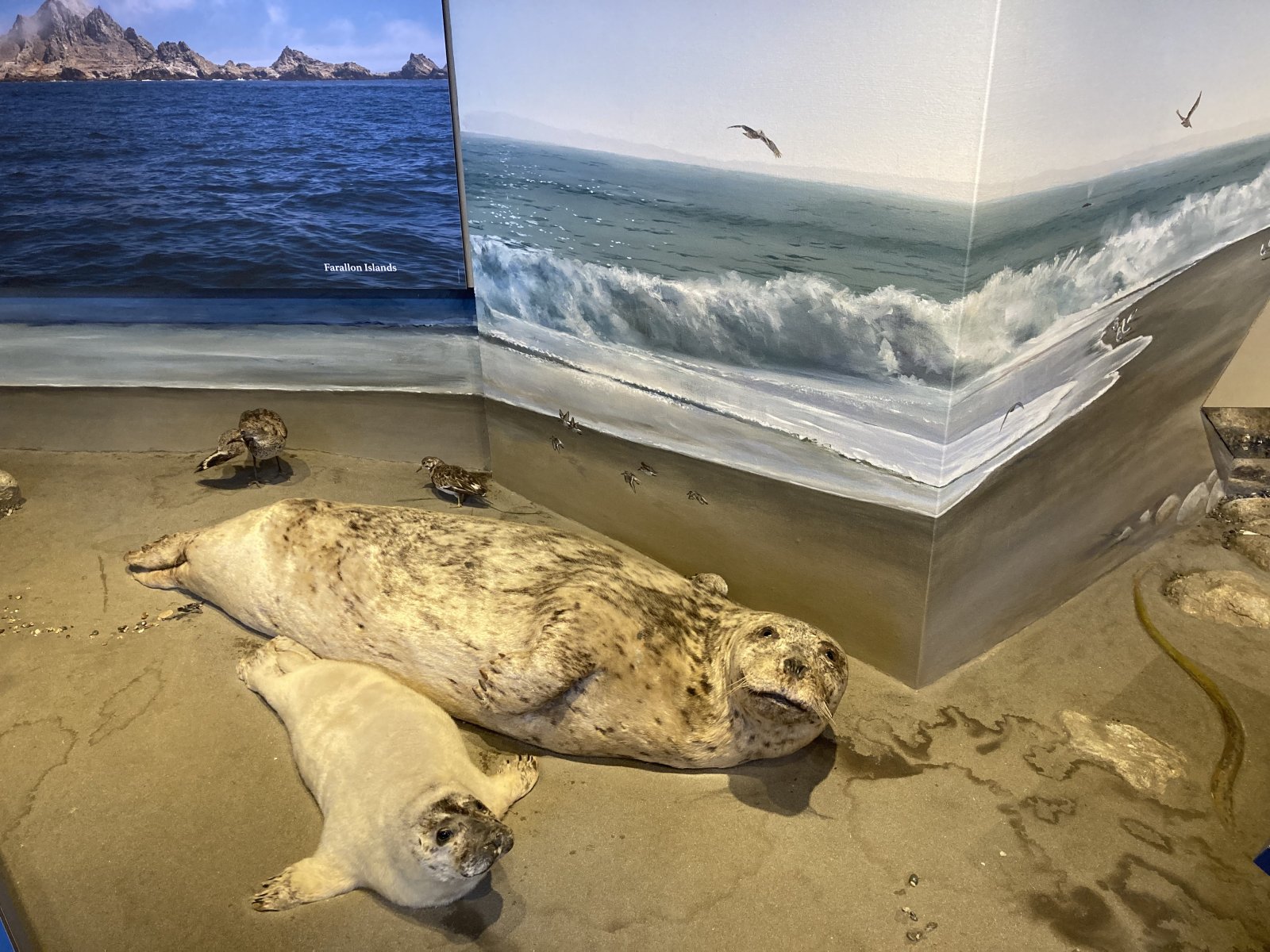August 26, 2023 - NoCali Vacation
Point Reyes
Lynnette and I flew from Anchorage, Alaska to San Francisco International. Our son Joe met us and the next day we headed north up Highway One to see the northern California coast and the big redwoods. Our first stop was the Point Reyes National Seashore.
We started off at the nice visitors center which had this excellent topographical map.
To the east of Point Reyes is Drakes Bay, named after the English sea captain Francis Drake. During his round the world voyage between 15 December 1577 and 26 September 1580 in the Golden Hind, it is believed he landed and spent several weeks somewhere along Drakes Bay. Although some say it may have been San Francisco Bay.
The expedition was authorised by Queen Elizabeth I and consisted of five ships led by Francis Drake. Termed a 'voyage of discovery', it was in effect an ambitious covert raiding voyage and the start of England's challenge to the global domination of Spain and Portugal. Drake sailed further up the west coast of America than any European ever had done, and landed in present-day California, claiming the land for England and naming it New Albion.


From the visitors center, you have to drive quite a ways through the park to get to Point Reyes itself where the lighthouse is. Along the way you pass the famous Cypress Tree Tunnel so of course we had to check it out.
They planted the Monterey cypress trees along this drive around 1930. The drive ends at a historic radio station. The white Art Deco-style station at the end of the tree tunnel was built between 1929 and 1931. For most of the 20th century, it provided ship to shore communications. This is where people stood watch over the airwaves on shore and at sea. Once, American coasts were dotted with great Morse code radio stations, all communicating with ships at sea. They're all gone now...all except this one, the one they called the Wireless Giant of the Pacific, located at Point Reyes.



Look at those trees, incessantly battered by the wind.
The National Park Service claims that Point Reyes is the "windiest place on the Pacific coast and the second foggiest place on the North American continent,". I believe it.




A good look at the old Point Reyes Lightyouse which features a powerful fresnel lens. The fresnel lens has been called "the invention that saved a million ships".
We read some of the lighthouse keepers log entries. Working at the lighthouse was tough and solitary.
Point Reyes Light Station was established in 1870. The lighthouse is a sixteen sided, 37-foot tower, and a twin of Cape Mendocino Light. The first-order Fresnel lens was first lit on December 1, 1870. Electricity came to the lighthouse in 1938, and concrete steps were built into the cliff in 1939. The station was automated in 1975.
Point Reyes is, by official records, the windiest and foggiest on the Pacific Coast. The station is frequently blanketed by week-long periods of fog and few years pass that do not see violent gales of 75 to 100 miles per hour (121 to 161 km/h) strike the area.








